
Summer Planting Picks From the Botany Greenhouse Staff
Gardeners here in the Pacific Northwest are really spoiled for choice. Despite our northerly latitude — we’re actually farther north than Montreal — we can grow nearly anything expect the most tropical or alpine of plants. It’s all thanks to the Pacific Ocean keeping our climate in a comfortable range that is neither too hot nor too cold. Though summers can be slow to start in our mild climate, it gives us a wider window of time to plant.
To help with some planting ideas, here is a list of plants that staff members at the UW Botany Greenhouse and the Medicinal Herb Garden are excited about. Happy digging!
Jeanette
Tower of Jewels (Echium pininana)
Half Hardy Perennial
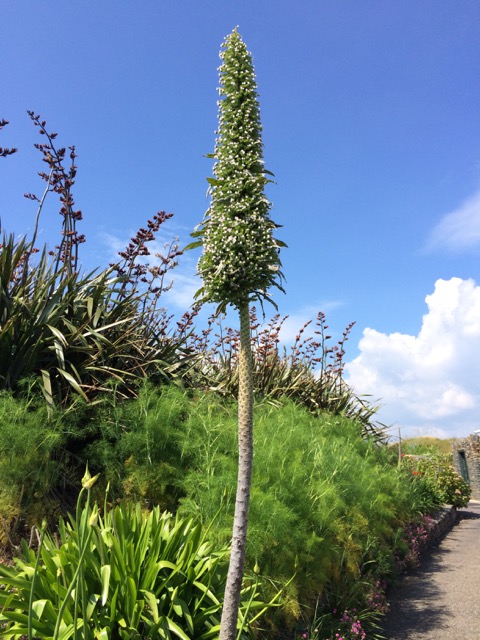
While on a vacation in Ireland, Jeanette discovered Echium pininana planted around the gardens at Old Head of Kinsale Golf Links. Covered with thousands of delicate blue flowers, these wacky plants rose high above the garden like shimmering blue spires — reminding her of Marge Simpson’s iconic hairdo. Jeanette wasn’t alone in admiring the echiums. They were abuzz with a huge diversity of pollinators feasting on the nectar and pollen the sapphire blossoms offered.
“There were numerous plants on the course,” Jeanette said, “some towering more than six feet tall and swarming with bees, flies, and beetles.”
Home to the mountainous cloud forests of La Palma (Canary Islands), this exotic cousin of the familiar borage resembles an odd palm tree. Maturing after two to three years of growth, the center of the large rosette of leaves will extend into the air. Once reaching upwards of fifteen feet, crowds of little blue funnel-like flowers emerge between the leaves, smothering the woody stem. After blooming for a couple months the echium will sadly die, but not before dropping seeds for a future generation.
Growing these goofy guys takes a bit of care, but well worth it. Good drainage is key, so plant them in a sunny but sheltered position — like against a south-facing wall — to help protect them against our occasional deep freezes. Avoid sites with heavy, mucky soil, though they will do best with a good drink during the hottest, driest periods of summer.
These plants are highly threatened in the wild, but their growing popularity has made it easier to find plants in local nurseries. This echium will definitely be the crown jewel of your pollinator garden.
Nile
Yuzu Citrus (C. ichangensis x reticulata var. austere)
Hardy Shrub
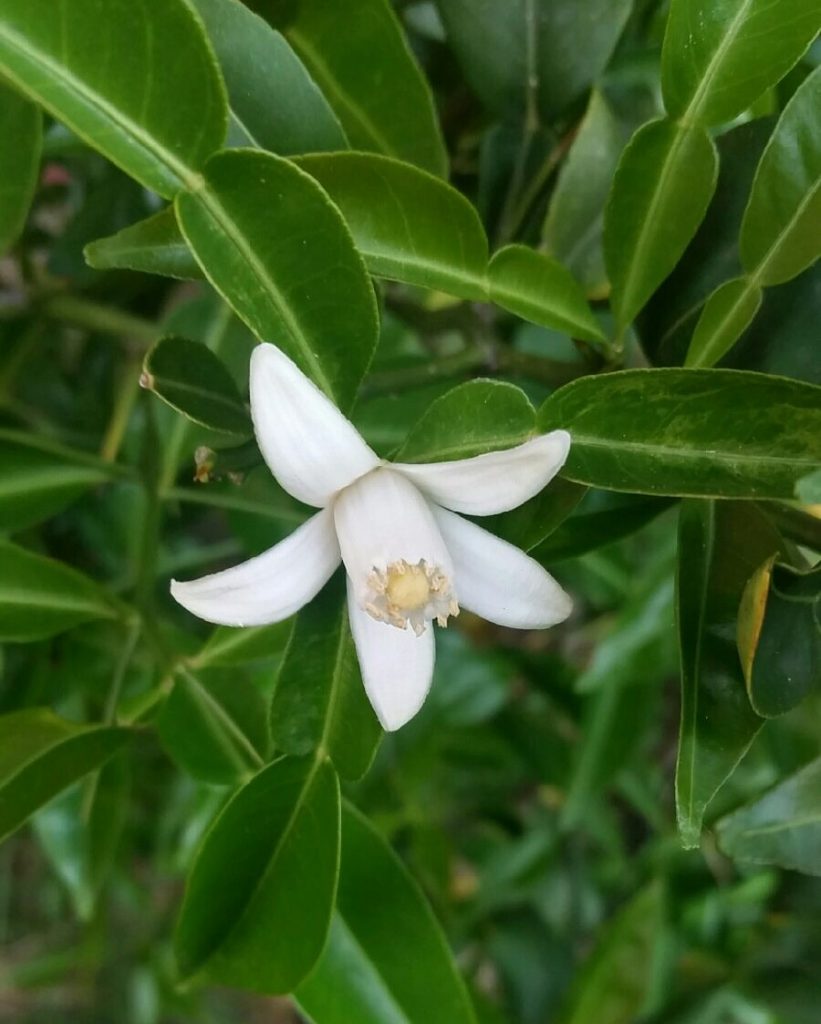
Can you imagine growing your own citrus tree right in your own backyard? Well, it turns out it can be done! For a few years now, Nile has been growing Yuzu in her Wallingford Garden. This seemingly tropical shrub has survived fickle Seattle winters unscathed, providing her with a nice annual crop of fruits. What a dream!
While the majority of citrus are tropical beings, Yuzu grows wild in central China and Tibet (the reason for its hardiness). This ancient hybrid is grown more for its aromatic rind, as the fruit gives a modest amount of juice. Prized in Japan, the use of Yuzu ranges from flavoring dishes to imparting its essence in cosmetics.
When planting your Yuzu, make sure to find a spot in your garden that is well-drained and gets plenty of direct sunlight. The hotter the better, since the extra heat will help ripen fruits. Water it well during the dry periods of summer, and an annual helping of rich compost will help provide it with the trace minerals it needs to be at the peak of health. After a year or so of settling in, your plant will begin producing fruit increasingly with age. When your fruits are ready for harvest, clip them off the tree to avoid injuring the branches and remember to watch out for its sharp thorns — they can be quite mean!
If you’re looking to invite a bit of the tropics to your garden, consider the Yuzu with its golden fruit, deliciously fragrant flowers, and glossy leaves.
Shawnee
Fig (Ficus carica)
Hardy Fruit Tree
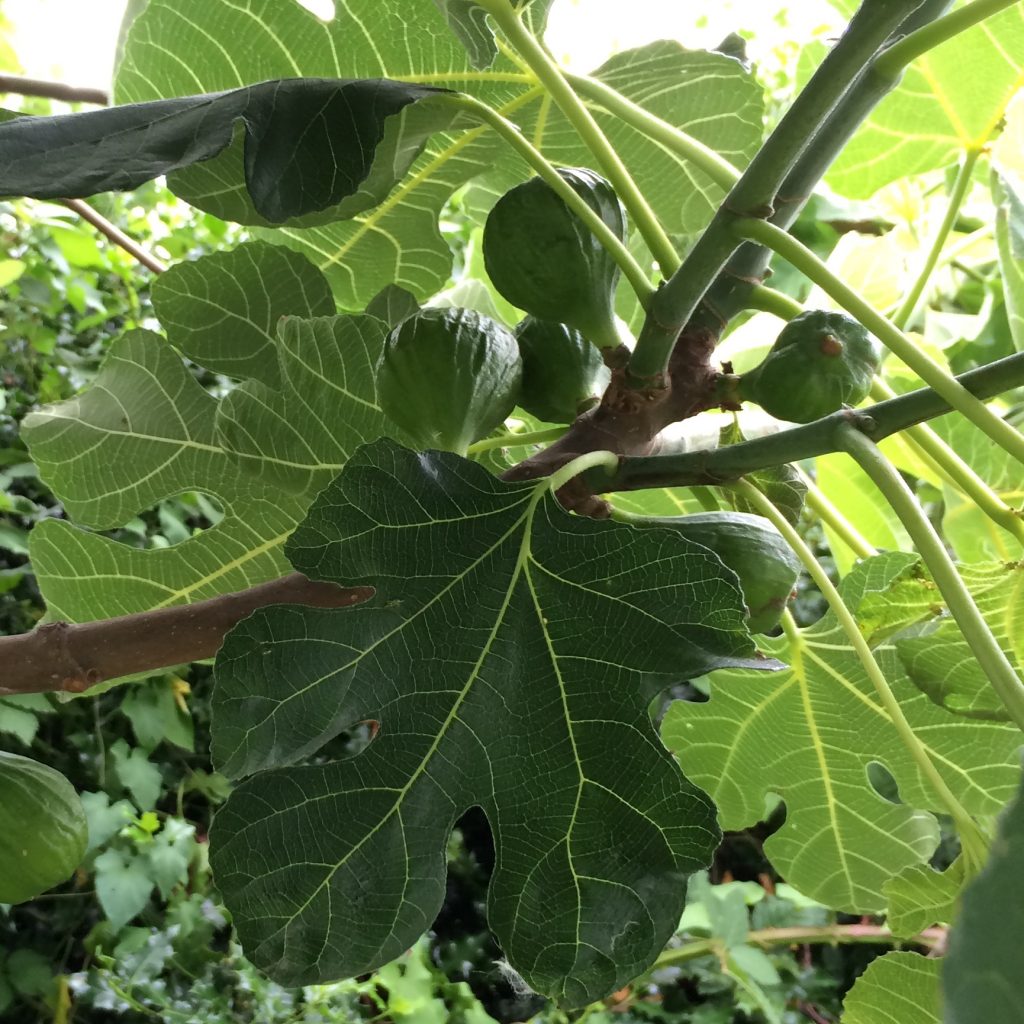
For a place where summer temperatures hardly reach febrile levels and growing tomatoes involves witchcraft, it seems like a mistake to call Seattle “Mediterranean.” Though our rainy season is a bit too long and chilly to be qualified as true Mediterranean, our rainy winters and dry summers fit the basic pattern. Luckily for us, many Mediterranean plants don’t seem to care about the specifics and flourish in our spring-like summers. Of such plants is the celebrated fig tree.
With their large felt-y leaves and sweetly fragrant sap, fig trees capture the spirit of the Mediterranean. The fruit alone makes this tree worthy of a spot in every garden. Eating a sun-kissed fig off the tree is one of deep pleasure. The combination of yielding skin, sweet jelly flesh, and minute crunchy seeds makes it absolutely luscious. After Shawnee tried her first tree-plucked fig last year, she is now growing her own tree.
“I grew up loving dried figs, but when I tried one fresh off the tree in the back of the greenhouse I had to ask myself what I had been doing with my entire life,” she said.
In the Mediterranean it is not uncommon to see trees happily growing through pavement cracks or perched on dry terraces. All these tough plants ask for is plenty of direct sun and good drainage. The hotter and sunnier the position the better, as this will help fruit ripen thoroughly. Though Mother Nature can give us a real cold snap during hard winters, some varieties can handle chilling swings with aplomb (Brown Turkey, Desert King, Lattarula, and Violette de Bordaux). Water it well the first year or two, but once it is established it will be fine during droughty summers.
Even if we cannot truly call ourselves Mediterranean, at least we can grow (and eat) a bit of it in dreary old Seattle.
Paul
Firecracker Begonia (Begonia boliviensis)
Tender Perennial
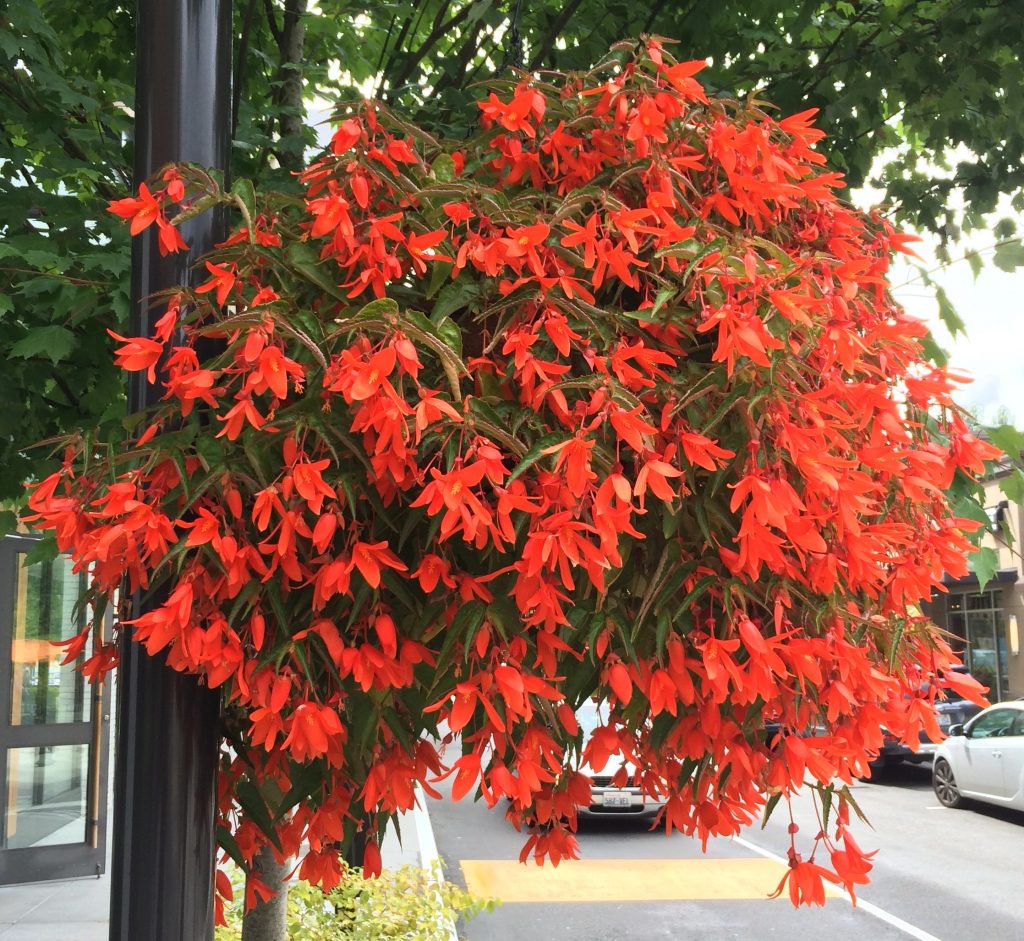
The excitement of growing new plants never wanes for a gardener, and seeing the garden flourish from their touch is a great joy. Unfortunately, gardens cannot expand to meet a gardener’s passion, so there will come (many a) time when adding a new plant will be at the eviction of another. Luckily, there is a way to include new additions. Paul has been including unlikely specimens to his garden for several years now without taking a shovel to the earth. His trick is selecting plants that don’t mind living life in a pot, and his Begonia boliviensis takes this treatment quite well.
This unusual begonia is quite different from the familiar houseplant varieties. Arising from a “tuber,” weeping bamboo-like canes form a bluish mound dripping with masses of feathery blossoms. The effulgent orange flowers are produced all summer long, so its tropical flair will enliven any garden or patio space. Whether in a shady spot or in full sun, this begonia will be happy just as long as it gets regular water during the summer months.
Once autumn rolls around this begonia will begin to die back in preparation for a deep winter’s sleep. When the canes begin to yellow and fall apart, cut them back to the base and cease all watering. Tuck the pot away in a cool, frost-free location — Paul uses his unheated garage — where it can quietly ride through the winter. Check back in spring for swelling buds a sign it is awake and ready to grow again.
This fiery begonia was once very difficult to acquire, but now can be easily found in most nurseries. If you’re looking for a good performer in the garden this begonia sure knows how to tango.
Terry
Wild Sweet Pea (Lathyrus odoratus ‘Cupani’)
Hardy Annual
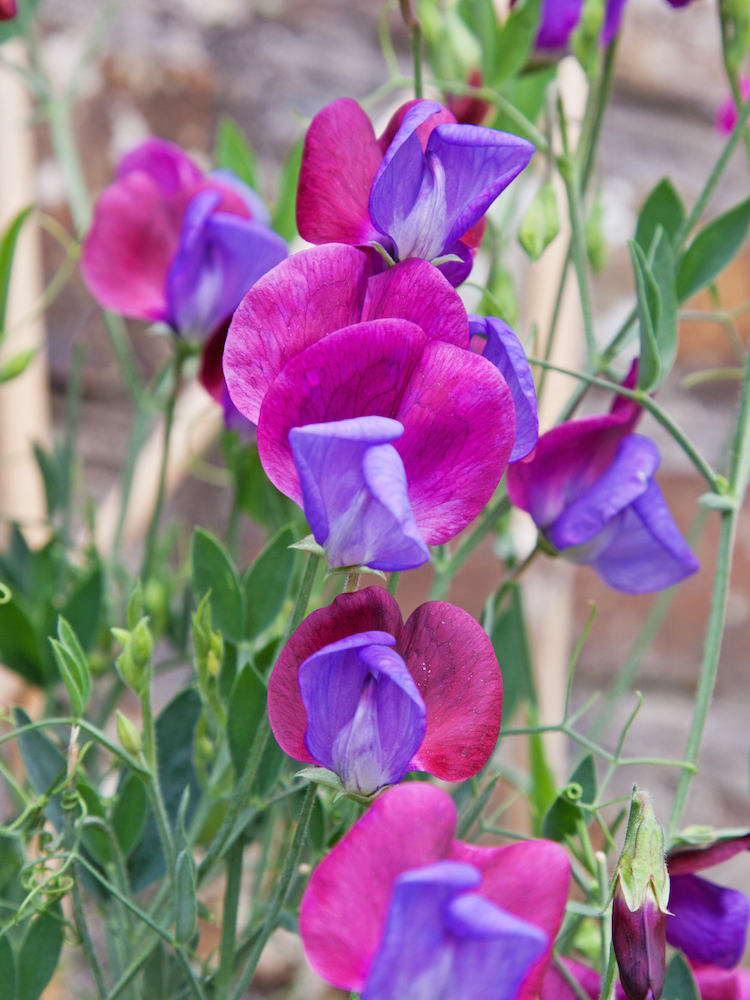
I’ve always found it difficult to describe the classic fragrance of sweet pea. The scent reminds me of good cream sweetened by honey and anointed with rich orange blossom water. Even the most accomplished of perfumers have difficulty recreating this much beloved and elusive fragrance. As the old adage goes, “Nothing beats the real thing,” so why not invite this carefree flower to your garden.
Between their bonneted flowers, lovely fragrance, and ease from seed, it’s no wonder why Victorian Britain was obsessed with growing sweet peas. Despite their strong association with British gardens, sweet peas are in fact native to Sicily, southern Italy, and the Aegean Islands. In the late 1600’s, Sicilian monk Father Francis Cupan sent an English friend seeds of a wild sweet pea with exceptional fragrance, and it was those seeds that started the gardening world’s love affair with sweet peas.
The “Cupani” sweet pea will be more like its wild ancestors in appearance and temperament. Yes, the rich bicolored flowers will be smaller than modern hybrids, but the intense fragrance belies their modest size and really carries in the air; and unlike their English counterparts, Cupani won’t shrivel in the heat. For best germination, soak seeds overnight in room temperature water discarding any seeds that didn’t swell. Sow them in the ground or in a large pot where they will receive plenty of sun and within easy reach of a hose. Remember: The more you pick, the longer it will flower.
If you want to be enveloped in the ethereal fragrance of sweet pea, plant a packet or two of Cupani and let it embrace you.
Keith
Italian Prune Plum (Prunus domestica)
Hardy Fruit Tree
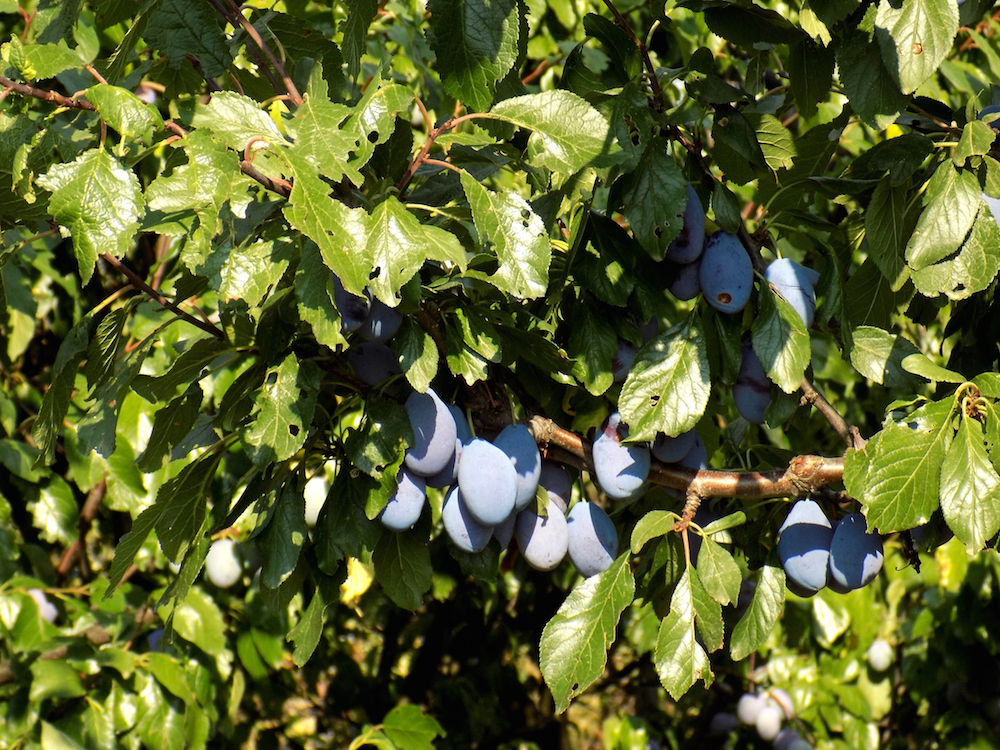
Spreading to two-and-a-half acres, Keith does an amazing job managing and curating the Medicinal Herb Garden as its sole caretaker. Over the years he has amassed a wonderful collection of plants, but still somehow manages to refresh the diversity of specimens every year. Though he enjoys cultivating every single plant, he has a fondness for Mediterranean plants. From olives to mastic trees, his horticultural prowess has allowed these plants to flourish not just on campus, but at his home, too. Of the edible Mediterranean plants, he would not be without the Italian Prune Plum.
In early spring, the trees grace the weary winter landscape with a profusion of delicate white blossoms giving way to powdered, black fruit with golden flesh in midsummer. Italian prune plums are “free stoned,” meaning the flesh and pit are unattached, allowing for easy eating with minimal mess. This also means they are easy to split and clean, lending themselves to drying — which Keith finds stupendous.
The Italian Prune Plum is an ideal tree for almost any situation. Pests and diseases rarely trouble it, and because of its easygoing nature it handles pruning well (perfect for small city gardens). In return for its summer bounty, all the tree asks for is a permanent location that receives plenty of sunlight and away from waterlogged soils. Water well for the first couple of years while the tree is settling in, but once it establishes it will only need extra water during the driest summers. The syrupy, sweet flesh of a sun-ripened plum is truly one of the joys of summer, especially one right off your own tree.
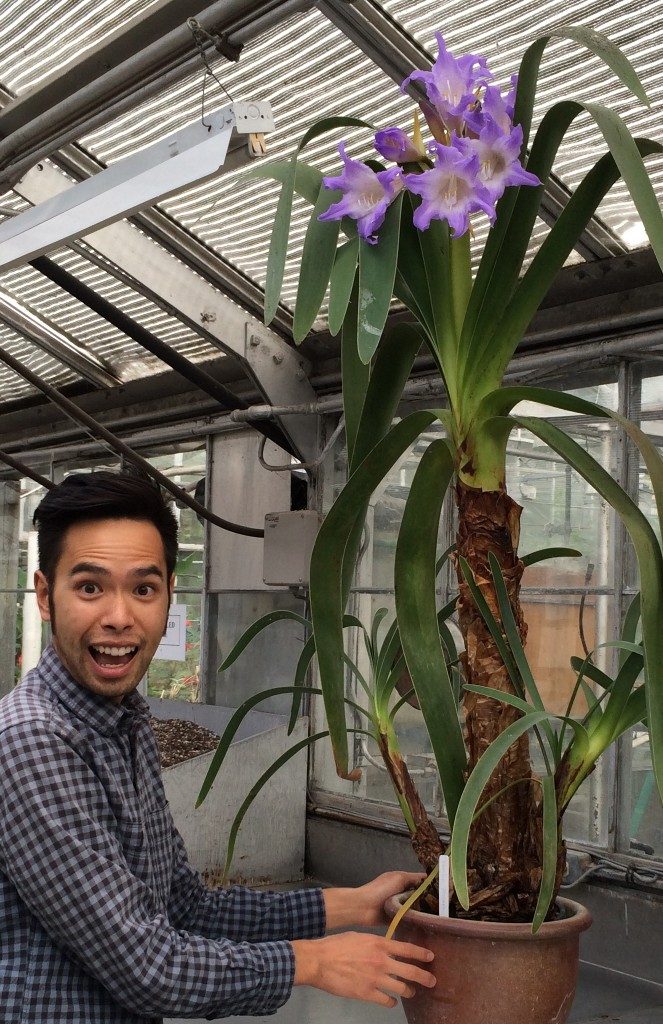 Greenhouse attendant Terry Huang loves all things botanical. He has realized the only thing lacking in his life is his own chlorophyll. He hopes one day to be matched for a chlorophyll transplant, but until then he loves working with plants and sharing their fantastic stories.
Greenhouse attendant Terry Huang loves all things botanical. He has realized the only thing lacking in his life is his own chlorophyll. He hopes one day to be matched for a chlorophyll transplant, but until then he loves working with plants and sharing their fantastic stories.